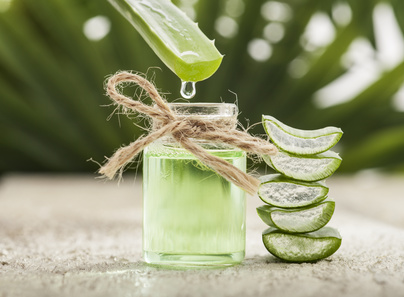 Here’s a sweeping generalization that, if you’re a betting person, you can take to the bank: people love hair. After all, we live in a society that’s obsessed with beauty. And at the pinnacle? Natural, abundant locks.
Here’s a sweeping generalization that, if you’re a betting person, you can take to the bank: people love hair. After all, we live in a society that’s obsessed with beauty. And at the pinnacle? Natural, abundant locks.
Unfortunately, father time is a cruel adversary. Most men can expect to lose strands with age. Combine that with the gray hair that pops up as we accumulate calendars and once natural, plentiful hair looks sparse and tired.
And it’s not just the men who suffer from hair loss and gray hair. Estimates suggest that up to half of American women will lose strands. They’re just as likely to develop gray hair and the loss of confidence of seeing those once beautiful strands look haggard and aged.
Do these symptoms ring a bell? Well, no worries. Beauty products for your hair aren’t just the shampoos you cleanse with, the conditioners or the styling gel. They’re also the hair loss treatments of this world, the grey coverage, the oral prescriptions.
This is an article on beauty products and how to style and manage hair loss and gray hair. A fun subject? No. But an important subject none-the-less. So get your writing pad out and take notes. Let’s review the various ways to nurture your mane and address these ailments that strike with time.
Hair Loss in Men
Ask any guy with hair loss and he’ll tell you that it stings. The pictures, the comments and those really annoying people who just have no idea when to keep their mouth shut.
If it’s any consolation to men who bald early, it’s that they’ll have company. The American Hair Loss Association estimates that two-thirds of American men will experience some form of hair loss by 35. Eighty-five per cent will have significant thinning by 50.
Why it Happens: Ninety-five per cent of hair loss in men is genetic. The culprit is a potent male sex hormone called dihydrotestosterone (DHT) that attacks the hair follicles, shrinking them until they’re gone. Androgenic alopecia, or male pattern baldness typically starts on the crown of the scalp and/or the hair line. It’s down hill from there.
While genetic hair loss in men and women is usually hormonal, it’s more severe in men and tends to start earlier. And as a general rule, the earlier you get to it, the more effective a treatment will be at reducing future loss, reversing loss, or simply making it part of your style.
Styling Tips: Some men just ignore hair loss. And some men get away with it. But if hair loss is bugging you, consider the following:
First, you can shave it off. Not all men can do this effectively, but for those who can, it’s an easy approach. Examples of guys who do the chrome dome with style? Patrick Stewart, Jason Statham, Vin Diesel. Try it. If it works, roll with it.
For those of us who don’t do so well with the hairless routine, keep it short. Shaggy hair tends to stand out and accentuate bald spots. Cut it short, cut it often and you may minimize that receding hairline and hair loss that eats away at your confidence.
 Beauty Products For Hair Loss in Men: Rogaine and Propecia are the best-known of the medical hair loss treatments. Rogaine is a topical solution that tends to work better for frontal hair loss. And though it doesn’t address the leading cause of hair loss in men – DHT – it appears reasonably effective in reducing hair loss up front and is available over-the-counter.
Beauty Products For Hair Loss in Men: Rogaine and Propecia are the best-known of the medical hair loss treatments. Rogaine is a topical solution that tends to work better for frontal hair loss. And though it doesn’t address the leading cause of hair loss in men – DHT – it appears reasonably effective in reducing hair loss up front and is available over-the-counter.
Propecia does address excessive levels of DHT and shows promising results. According to one study, forty-eight per cent of men who used Propecia experienced regrowth. And 42% reduced hair loss.
Unfortunately, Propecia is linked to a disturbing list of side effects. Among them, an increased risk of prostate cancer and impotence. In some cases, erectile dysfunction persists, even with discontinued use of the treatment. Combine these with risks of male breast cancer and birth defects passed via semen and you might think twice of using Propecia.
Head shaving works for some men. For those with whom it doesn’t, Rogaine and Propecia show respectable regrowth, though Profollica may be safer.
As an alternative, Profollica is a natural two-step hair regrowth system, including a daily supplement and an activator gel with trichogen. Research continues, but in a clinical study, 90% of men who used Profollica reported less hair loss. Potentially safer than Propecia.
In addition, the HairMax Laser Comb is a new product that stimulates nutrients to the scalp with a laser. Results are mixed with this product, though in one study 90% of users purportedly saw an improvement in hair growth after 16 weeks.
The Bottom Line Is…Head shaving works for some men. For those with whom it doesn’t, Rogaine and Propecia show respectable regrowth, though Profollica may be safer.
Perhaps your best approach to balding is to simply to make do with what you have rather than what you don’t. A combination of a short hairstyle, one of the safer hair loss treatments and an acceptance of your less-than-full head of hair might be the healthiest way to go, for your health and your confidence.
Hair Loss in Women
 Hair loss is hard enough for men. Tell a woman she’s destined to lose her locks and her ego can take a swan dive. And yet 60% of women over 70 experience noticeable hair loss. Five per cent lose hair by 30.
Hair loss is hard enough for men. Tell a woman she’s destined to lose her locks and her ego can take a swan dive. And yet 60% of women over 70 experience noticeable hair loss. Five per cent lose hair by 30.
The good news? Most women experience less hair loss than men. And it usually hits later. The hair loss that does occur is often a wide thinning of volume, not the receding hairline or bald patch seen in men. In women, it’s often seen in a widening part or a smaller pony tail.
Why it Happens: Most often, women experience hair loss thanks to androgenetic alopecia – a genetic sequence passed down by either parent that shortens the growth cycle in which hair stays on the head. Women who lose hair earlier in life tend to experience more severe hair loss than women with symptoms after 50.
According to a recent study, African-American women in particular are susceptible to hair loss from braided hair styles, as it’s not uncommon for women in this demographic to get expensive hair extensions, which they’re likely to wear for a longer duration.
In some cases, hair loss in women is triggered by pregnancy, thyroid disorders and autoimmune diseases. And some medications can trigger hair loss. Fortunately, when hair loss is not genetic, it’s often reversible.
Styling Tips: Women with hair loss should avoid braids and tightly woven hair styles that put traction on the hair shaft. According to a recent study, African-American women in particular are susceptible to hair loss from braided hair styles, as it’s not uncommon for women in this demographic to get expensive hair extensions, which they’re likely to wear for a longer duration.
While women predisposed to hair loss will experience thinning regardless of hair style, it’s also advisable to avoid excessive perming or treatments with heat. Hair coloring, if pursued, should be kept within three shades of one’s natural color. Use an experienced hair stylist, with sharp scissors, and speak with your stylist about various mousse products that make hair look thicker.
In addition, be sure to minimize heat and trauma on the hair, whether from blow dryers or excessive towel patting. Avoid combs with sharp teeth – use a comb with round teeth spaced further apart.
Finally, continue with your daily or weekly regimen of shampoo and conditioner. While excessive styling can traumatize the hair and hasten the hair loss process, it’s unlikely that shampooing and regular cleansing will trigger further loss of hair.
 Beauty Products For Hair Loss in Women: Rogaine is currently the only FDA-approved topical treatment for women. Available in both 2% and 5% concentrations, the latter tends to produce better results, though it might also stimulate growth of facial hair.
Beauty Products For Hair Loss in Women: Rogaine is currently the only FDA-approved topical treatment for women. Available in both 2% and 5% concentrations, the latter tends to produce better results, though it might also stimulate growth of facial hair.
While Propecia is a common hair loss treatment for men, it’s also linked to male breast cancer, prostate cancer and impotence. In some cases, the side effects linger even after discontinued use. And it’s not recommended for women who are pregnant or planning to get pregnant. When you consider the various risks involved with Propecia, you might be better off just skipping it altogether.
Additionally, in some instances, low levels of a protein called ferritin may trigger hair loss, for which iron supplements might help.
The Bottom Line Is…Women tend to lose hair less severely than men, and they usually do it later. That gives most women plenty of time to adapt to their gradual hair loss with a new style and various mousse products to maximize the hair that remains.
If you’re among the estimated five per cent of women that experience aggressive hair loss by 30, see your doctor to determine whether it’s genetic or caused by a medical condition. If it’s the latter, most likely the hair loss is reversible. If it’s not, a combination of Rogaine and/or the expertise of an experienced stylist should reduce the effect that hair loss has on your confidence.
Gray Hair
 As if hair loss in men and women wasn’t enough, gray, silver and white hair is another reminder that, at some point, the years catch up.
As if hair loss in men and women wasn’t enough, gray, silver and white hair is another reminder that, at some point, the years catch up.
Once again, it seems like biology plays favorites. Some people lose their hair color earlier and with greater severity than others, and some people do so at a very young age. In fact, there are documented cases of white hair sprouting at age ten, and it’s not uncommon for people to go completely gray by 30.
Relax, there’s no reason to stress about this one either. Let’s go over the goods on gray, silver and white hair, how to conceal it, if you wish, or simply how to blend it into your personal style.
Why it Happens: Hair discoloration occurs when the pigment cells in your hair follicles stop producing the melanin responsible for your natural hair color.
The jury is still out on the particular genes that determine the process, but the age by which it begins is largely genetic. Most caucasians start the transition in the mid-30s, Asians in the late-30s and African-Americans in the mid-40s.
 Contrary to popular belief, there’s no definitive evidence linking stress to gray hair. That said, some autoimmune and genetic conditions can also cause early discoloration, including Wermer Syndrome and alopecia areata. The latter causes colored hair to fall out and accentuates grays and whites.
Contrary to popular belief, there’s no definitive evidence linking stress to gray hair. That said, some autoimmune and genetic conditions can also cause early discoloration, including Wermer Syndrome and alopecia areata. The latter causes colored hair to fall out and accentuates grays and whites.
Vitamin B12 deficiency and problems with the thyroid and pituitary glands may also cause hair discoloration, though they’re usually reversible when the problem is corrected.
And if you need yet another reason to quit smoking, consider that a 1996 study conducted by the British Medical Journal found that smokers were four to five times more likely to gray prematurely.
Styling Tips: Relax. We may have been brain-washed to think that gray hair makes us look old, but if you’re young, have good skin, live healthy and stay active, the color of your hair ain’t gonna age you any further. Heck, a gray-haired singer recently won American Idol. Go Taylor Hicks!
We may have been brain-washed to think that gray hair makes us look old, but if you’re young, have good skin, live healthy and stay active, the color of your hair ain’t gonna age you any further.
Granted, we’re not all George Clooney. But some men and women do the gray gig with style. If you want to be one of them, try a chic, short cut. Unless you’re related to Richard Gere, avoid long, shaggy hair. Get a modern cut, with sharp edges, like you just graduated from college. Or something with smooth bangs.
And keep up with the regular hair care. Shampoo often, with products with a blue base. These can prevent gray hair from developing a yellow hue. Use a conditioning mask once a month to moisturize your scalp.
Some women use a flat iron to add shine to gray hair, and while it’s an effective technique, remember that heat can damage hair and expedite hair loss. If that’s something that runs in your family, you might skip this routine.
Beauty Products For Grays, Silvers, Whites: If you’re determined to conceal your transitional hair color, there are ways to do that.
For sporadic grays and their likeness, try semi- or demi-permanent hair color products that blend grays into your natural color. The effects are good for several weeks and are a good option for people in the early stages of gray. You might also try highlights. Have a colorist administer these products at first, to minimize the transition between the grays and your natural color.
 When you’re about half-way gray, consider switching to permanent color. Be aware, however, that coloring products can damage hair, and if you choose to color your mane, keep it within three shades of your natural color.
When you’re about half-way gray, consider switching to permanent color. Be aware, however, that coloring products can damage hair, and if you choose to color your mane, keep it within three shades of your natural color.
You can also forgo the whole dye routine with a coloring tool. Try spray-on airbrush hair make up, which washes out with shampoo.
Remember that hair color is just that – hair color. The true mark of beauty in a women is how she carries herself. So stay active, nurture your skin. Use the above mentioned techniques and beauty products to manage your gray or just celebrate it completely. Which ever path you choose, consider silver-haired Ford Model Cindy Joseph’s recent words to WebMD:
“The ability to take joy in her life is what makes a woman truly beautiful.”




